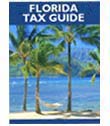by Robert Borges on August 26, 2025
Should Snowbirds Rent or Buy? Quick Answer
Renting as a Snowbird
- Pros: Flexible, no maintenance, try new locations each year
- Cons: Rising seasonal rents, limited availability in peak season
- Average Cost: $2,000–$5,500/month depending on location
Buying as a Snowbird
- Pros: Long-term investment, stability, comfort, potential rental income
- Cons: Upfront purchase price, ongoing maintenance, property taxes
- Average Cost: $250,000–$600,000+ for a vacation home in popular snowbird states
In short: Renting works best for flexibility and lower commitment, while buying is ideal for retirees who want a permanent winter home base and long-term value.
What Is a Snowbird and Why Do People Become Snowbirds?

For retirees and active adults nearing retirement, one question often sparks the start of their new chapter: “How are the winters?”
Enter the snowbird lifestyle—a seasonal migration where people from colder northern states head south each winter to enjoy warm, sunny climates. Snowbirds often flock to states like Florida, Arizona, and South Carolina for a few months (typically October/November through April/May) before returning north in spring.
The appeal is obvious: mild weather, outdoor recreation, vibrant social opportunities, and access to community amenities that make retirement more enjoyable. But one major decision remains for snowbirds starting out—should snowbirds rent or buy their winter home?
Should Snowbirds Rent or Buy?
The answer depends on your finances, lifestyle, and long-term goals. Let’s look at both options in detail.
Why Do Some Snowbirds Rent Instead of Buy?
Renting appeals to many snowbirds who want flexibility. Some return to the same rental each year, while others enjoy switching up their location and trying different destinations. Renting also eliminates the responsibilities of property ownership.
- Lower upfront commitment: No mortgage, property taxes, or long-term maintenance.
- Flexibility to move around: Try Florida one year, Arizona the next.
- Easier budgeting: Pay seasonal rent, utilities, and travel costs—without unexpected expenses.
How much does it cost to rent as a snowbird? According to rental market reports:
- Florida: $3,000–$5,500/month for a seasonal condo or single-family home in popular snowbird areas.
- Arizona: $2,500–$4,500/month near Phoenix or Scottsdale golf communities.
- South Carolina & Georgia coasts: $2,000–$4,000/month depending on proximity to beaches.
- Texas: $1,800–$3,000/month in desirable resort towns.
These costs vary widely based on location, amenities, and timing. Rentals in peak season (January–March) are most expensive.
Why Do Some Snowbirds Buy Instead of Rent?
For retirees who crave stability, buying a winter home offers peace of mind and long-term value. Many snowbirds buy a condo or villa in an amenity-rich community to enjoy the same friends, neighbors, and activities year after year.
- Equity and investment potential: Buying allows you to build value rather than paying rent.
- Personalization and comfort: Keep your belongings in place, no packing/unpacking every year.
- Potential rental income: Many snowbirds rent their vacation homes when not in use.
What does it cost for snowbirds to buy a vacation home?
- Florida: Median second-home prices range from $250,000 to $600,000 in snowbird-heavy destinations.
- Arizona: $300,000–$550,000 for homes in golf and active adult communities.
- Nevada: Around $400,000–$700,000 in Las Vegas-area mountain resort communities
- Carolina/Georgia coasts: $300,000–$600,000 for resort-style condos or homes.
- Texas: $250,000–$500,000 in popular snowbird-friendly towns.
Additional costs include insurance, property taxes, HOA fees, and upkeep—expenses that renting avoids.
Pros and Cons of Renting vs. Buying for Snowbirds
Renting Pros:
- Flexible, no long-term commitment
- Try different destinations
- No maintenance costs
Renting Cons:
- Costs can rise annually
- Limited availability in peak season
- No equity built
Buying Pros:
- Long-term investment potential
- Stability and comfort
- Can generate rental income
Buying Cons:
- High upfront costs and taxes
- Ongoing maintenance responsibility
- Less flexibility if lifestyle needs change
Best Places for Snowbirds to Rent or Buy

Snowbirds typically migrate to regions with warm weather, vibrant communities, and plenty of recreational activities. Some of the most popular snowbird destinations include:
- Florida: Beaches, golf, and countless active adult communities.
- Arizona: Desert landscapes, golf, and cultural attractions.
- North/South Carolina: Coastal charm, outdoor recreation, rich history
- Georgia: Coastal towns and mild winters.
- Nevada: Las Vegas and nearby resort communities.
- Texas: Affordable resort-style living and cultural hubs.
- California: Sunshine, ocean views, and luxury communities.
Some snowbirds also prefer an RV retirement community for mobility and affordability, allowing them to travel while still having access to amenities and like-minded neighbors.
FAQs About Renting vs. Buying as a Snowbird
How do snowbirds find rentals?
Most start their search as early as August for the following winter, using real estate websites, vacation rental platforms, or directly contacting retirement communities.
What is the best time for snowbirds to buy?
Late spring is often ideal, once peak-season competition eases and sellers are more motivated.
Can snowbirds rent out their vacation homes?
Yes. Many snowbirds cover part of their ownership costs by renting their property when not in use.
What should snowbirds consider before deciding?
Budget, lifestyle goals, desired location, access to healthcare, proximity to family, and preferred amenities are all key factors.
Final Thoughts: Should Snowbirds Rent or Buy?

There’s no one-size-fits-all answer. If flexibility, lower upfront cost, and freedom to explore appeal to you, renting may be best. If stability, investment potential, and creating a home base matter more, buying makes sense.
For nearly 30 years, Private Communities Registry (PCR) has been helping retirees and active adults explore hundreds of lifestyle communities across the U.S. Whether you want to rent, buy, or explore communities in warm-weather destinations, PCR connects you with options that match your lifestyle, budget, and retirement dreams. Start planning your snowbird migration today!
About the Author
With over 20 years of experience as a seasoned content creator, Robert Borges is the senior writer for Private Communities Registry (PCR), specializing in real estate trends and master-planned communities. He works closely with builders, developers, and real estate pros to create helpful content that guides homebuyers in finding the perfect community, ensuring they have the information needed to make confident, informed decisions.
